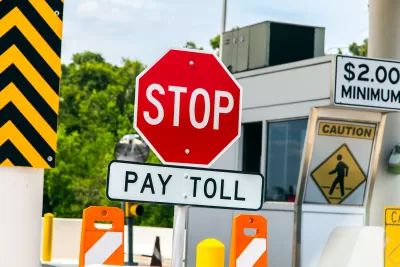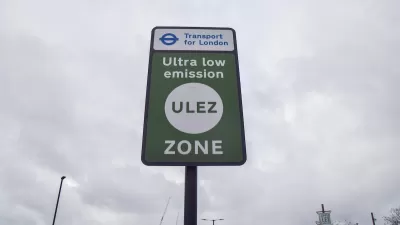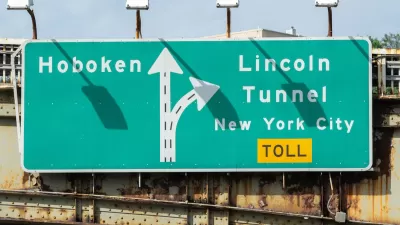It’s time to reform transportation pricing to reduce traffic congestion, crashes, and pollution, and improve non-auto travel options. Raise my prices, please!

If you are a typical motorist you spend an inordinate amount of time A) complaining about traffic and parking congestion, and B) opposing increased road tolls, parking fees, and fuel tax increases. These are contradictory: efficient pricing is the most effective solution to these problems. If driving is underpriced, congestion, crashes, and pollution problems are unavoidable. Every time somebody says “I oppose road tolls,” they are effectively saying, “I want traffic congestion.” Either embrace efficient pricing or stop complaining!
There is hopeful news on this front. Many jurisdictions are implementing pricing reforms, including efficient road tolls, parking fees, and distance-based vehicle charges. Once established they have proven popular. It looks like New York City will soon follow suit. New York Times columnist Peter Coy recently interviewed me about this issue. Let me share some key insights.
Rational pricing
There are two basic economic principles to consider when evaluating pricing reforms. First, economic systems are most efficient and fair if prices (what users pay for a good) reflect the marginal costs of producing it. To be efficient, prices should increase during congested periods. This prioritizes travel so higher-value trips can outbid lower-value trips for scarce road and parking space. It also tests consumer willingness to pay for a good, so society does not bear $10 in costs for a vehicle trip that users only value at $5.
For example, if a commuter can choose between driving — which imposes $10 worth of total road, parking, congestion, crash, and pollution costs — or taking a bus that only imposes $5 in total costs, the system becomes more efficient if drivers are charged $10 fees so they have an incentive to take the bus
The second principle, called consumer sovereignty, means that markets (in this case, transportation systems can be considered a market for mobility and accessibility) should provide the services and activities that people demand. Current planning tends to invest a lot in automobile facilities and underinvest in non-auto modes, which is unfair to non-drivers and inefficient because it forces travelers to drive for trips that they would prefer to make by non-auto modes if they were more convenient, affordable, and socially acceptable.
Non-auto modes tend to experience strong economies of scale; as more travelers use these modes the service improves and is better integrated into a community. For example, in cities where roads and parking are unpriced, public transit typically only achieves a 5 to 15 percent mode share, consisting of non-drivers. However, transit mode shares typically double if parking is priced, and double again if urban roads are tolled, creating a virtuous cycle of more transit ridership, service, and respect, making non-drivers far better off.
Irrational pricing
Of course, motorists think they want free roads and parking, but that is a fallacy: those facilities are never really free; the choice is between paying for them directly through user fees or indirectly through higher taxes, housing costs, and prices for other goods. For example, the “free” parking at your local pub increases the cost of beer for all patrons regardless of whether they arrive by car or foot. This is unfair to non-drivers and encourages drinkers to drive, increasing congestion, crash risk, and pollution.
There is an extensive vocabulary for overpricing; when people feel they are overcharged we say they are gouged, fleeced, and cheated, but there is no similar vocabulary for underpricing although it is equally harmful. Motorists often argue that road user fees are regressive and unfairly burden poor motorists, but in fact, few urban-peak drivers have low incomes. If a community is really concerned about this impact, they can provide income-based discounts. By reducing bus delays and funding non-auto modes, decongestion pricing can provide compensatory benefits to lower-income households. Affordability advocates should be the greatest supporters of efficient transportation pricing.
Optimal pricing
Optimal pricing requires a variety of taxes and fees to internalize various costs, described below.
Fuel tax increases
Fuel tax increases can be justified to cover roadway costs and reduce emissions. They currently only cover about half of total government roadway expenditures, so current taxes, which average about $0.50 per gallon of gasoline, should approximately double to pay their fair share of roadway costs. Carbon costs are typically estimated at about $50/tonne, which justifies a tax of about $0.50 per gallon. As a result, incorporating roadway and emission costs could justify increasing current fuel taxes from the current $0.50 to about $1.50 per gallon. To minimize economic shocks, such price increases should be gradual and predictable, so consumers can take them into account when making long-term decisions such as what vehicle to own and where to live.
Electric and hydrogen-fueled vehicles do not pay special fuel taxes and so underpay their share of roadway costs. Some states now charge electric vehicles annual road user charges, but because they are fixed fees they are unfair and inefficient; they overcharge low annual-mileage EVs and undercharge those driving more miles per year. Road tolls and distance-based fees would be more efficient and fair.
Road tolls and decongestion pricing
Road tolls are an effective way to charge users for roadway costs, particularly for expensive highways and bridges. Motorists want expensive roadway expansions provided that somebody else foots the bill, but when required to pay directly through tolls, the need for more capacity often disappears. What most economists call congestion pricing (I prefer decongestion pricing), refers to fees that are higher during peak periods and lower off-peak so travelers have incentives to shift when, where, and how they travel to avoid congestion. This is the most effective way to reduce congestion, particularly if implemented with non-auto travel improvements so drivers have both positive and negative incentives to shift to more space-efficient modes.
Efficient parking pricing
Efficient parking fees increase with demand. This can include parking unbundling (parking spaces are rented separately from building spaces, so non-drivers are no longer forced to pay for costly parking spaces they don’t need) and parking cashing out (non-drivers receive the cash equivalent of the parking subsidies provided to motorists). Efficient parking pricing typically reduces affected driving 10 to 30 percent, and so reduces traffic and parking congestion, accidents, and emissions. They are currently thwarted by parking minimums that make pricing infeasible at most destinations, so the first step in efficient parking pricing is to eliminate parking mandates.
Distance-based (PAYD) vehicle fees
Distance-based (also called Pay as You Drive, or PAYD) pricing converts vehicle taxes, fees, and insurance premiums from fixed to distance-based charges, so for vehicles that average 10,000 annual miles, each $1,000 fee becomes $0.10/mile. This is more efficient and equitable than fixed fees and gives motorists a new opportunity to save money, which increases affordability. Distance-based insurance is particularly effective at reducing crashes since the fee increases with a motorist’s risk rating, so more dangerous drivers have more incentive to reduce their mileage and therefore their crash risks. This is also one of the most effective and by far the most cost-effective emission reduction strategy. What’s not to like?
Transit subsidies
Public transit subsidies are justified to provide basic mobility for non-drivers and an affordable alternative to driving, and where automobile travel is underpriced can be justified as a second-best solution to traffic congestion, risk, and pollution. By themselves, transit subsidies provide only small reductions in total vehicle travel and traffic problems. But, if implemented with efficient road, parking, and vehicle pricing, and if they provide a catalyst for transit-oriented development, public transit improvements can provide large benefits. Motorists have good reasons to support transit improvements that allow other travelers to shift modes, which reduces the tolls needed to achieve a given congestion reduction target. For example, if transit service is inferior on a corridor, a $10 toll may be required to reduce traffic volumes sufficiently to achieve LOS C, but if transit service is convenient, comfortable, and integrated a $5 toll may be required. This benefits both the travelers who change modes and those who continue to drive.
The table below evaluates the effectiveness of these transportation pricing reforms in achieving various goals. They vary in their impacts and benefits. For example, fuel taxes are very effective at reducing emissions but do little to reduce congestion, while variable road tolls are very effective at reducing congestion but, because they apply to only a small portion of total travel, they do little to reduce emissions. An efficient transportation system must apply a combination of pricing reforms.
Transportation pricing effectiveness
Community Goals |
Fuel Taxes |
Road Tolls |
Parking Pricing |
Distance-based Fees |
Transit Subsidies |
|
Infrastructure cost recovery |
Good |
Very good |
Very good |
Good |
Not useful |
|
Congestion reduction |
Minimal benefit |
Very Good |
Good |
Good |
Varies |
|
Emission reduction |
Very Good |
Minimal |
Good |
Very Good |
Varies |
|
Traffic safety |
Good |
Good |
Good |
Very Good |
Varies |
|
Affordability |
Varies |
Varies |
Varies |
Very Good |
Very Good |
Transportation pricing reforms vary in their benefits. To be efficient and fair our transportation system requires a variety of pricing reforms.
These effects tend to be cumulative and synergistic: efficient road pricing not only reduces traffic congestion, but also tends to reduce parking problems and pollution emissions (although by reducing traffic congestion, road pricing could increase crashes unless implemented with traffic speed management), while efficient parking management, by reducing urban vehicle ownership and trips helps reduce traffic congestion, crashes, and emissions.
Some of these impacts are quite variable. Transit subsidies alone cause minimal reductions in vehicle travel and associated costs but can be very effective if implemented with other pricing reforms and with policies that create transit-oriented developments. Similarly, pricing reform impacts on affordability depend on how revenues are used; if invested in walking, bicycling, and public transit improvements, fuel taxes, road pricing, and road tolls can greatly improve affordability, providing large benefits to low-income households and non-drivers.
This is good news. It shows that with better pricing our transportation system can be much more efficient and equitable. Smart people should demand, “Raise my transportation prices, please!”
For more information
Matt Butner and Bethany A. Davis Noll (2020), A Pileup. Surface Transportation Market Failures and Policy Solutions, Institute for Policy Integrity.
Tony Dutzik and Jeff Inglis (2014), Subsidizing Congestion: The Multibillion-Dollar Tax Subsidy That’s Making Your Commute Worse, Transit Center and the Frontier Group.
Jonas Eliasson (2021), “Efficient Transport Pricing–Why, What, and When?,” Communications in Transportation Research.
FHWA (2008), Economics: Pricing, Demand, and Economic Efficiency - A Primer, Federal Highway Administration.
Kenneth Gwilliam (2017), Transport Pricing and Accessibility, Brookings Institution.
Todd Litman (2014), Economically Optimal Transport Prices and Markets: What Would Happen If Rational Policies Prevailed? International Transportation Economic Development Conference.
Todd Litman (2022), The Business Case for Multimodal Transportation Planning, Planetizen.
Mobility Pricing Independent Commission (2018), Metro Vancouver Mobility Pricing Study: Findings and Recommendations for an Effective, Farsighted, and Fair Mobility Pricing Policy, Translink.
Nomadia (2023), Practical Guide to Transportation Cost Optimization, Nomadia Group.
Michael Manville (2019), “Longer View: The Fairness of Congestion Pricing,” Transfer Magazine.
Stephen Proost (2018), Reforming Private and Public Urban Transport Pricing, International Transport Forum.
Hens Runhaar (2001), Efficient Pricing in Transport: The Gap between Theory and Practice, Delft University of Technology.

Manufactured Crisis: Losing the Nation’s Largest Source of Unsubsidized Affordable Housing
Manufactured housing communities have long been an affordable housing option for millions of people living in the U.S., but that affordability is disappearing rapidly. How did we get here?

Americans May Be Stuck — But Why?
Americans are moving a lot less than they once did, and that is a problem. While Yoni Applebaum, in his highly-publicized article Stuck, gets the reasons badly wrong, it's still important to ask: why are we moving so much less than before?

Research Shows More Roads = More Driving
A national study shows, once again, that increasing road supply induces additional vehicle travel, particularly over the long run.

Judge Halts Enforcement of Anti-Homeless Laws in Grants Pass
The Oregon city will be barred from enforcing two ordinances that prosecute unhoused residents until it increases capacity and accessibility at designated camping sites.

Advancing Sustainability in Los Angeles County Schools
The Los Angeles County Office of Education’s Green Schools Symposium brings together educators, students, and experts to advance sustainability in schools through innovative design, climate resilience strategies, and collaborative learning.

Using Old Oil and Gas Wells for Green Energy Storage
Penn State researchers have found that repurposing abandoned oil and gas wells for geothermal-assisted compressed-air energy storage can boost efficiency, reduce environmental risks, and support clean energy and job transitions.
Urban Design for Planners 1: Software Tools
This six-course series explores essential urban design concepts using open source software and equips planners with the tools they need to participate fully in the urban design process.
Planning for Universal Design
Learn the tools for implementing Universal Design in planning regulations.
City of Moreno Valley
Institute for Housing and Urban Development Studies (IHS)
City of Grandview
Harvard GSD Executive Education
NYU Wagner Graduate School of Public Service
City of Cambridge, Maryland
Newport County Development Council: Connect Greater Newport






























